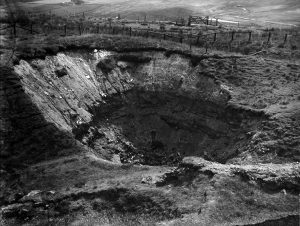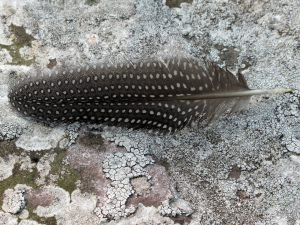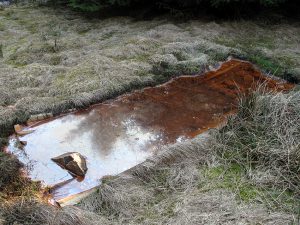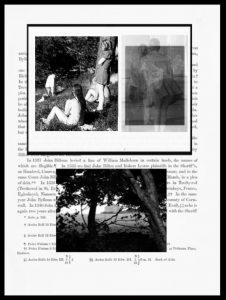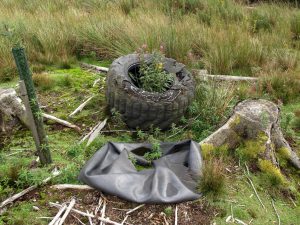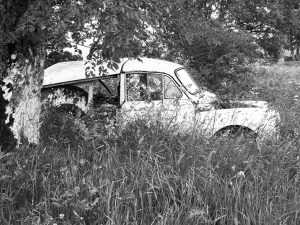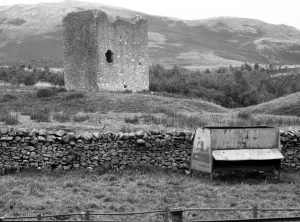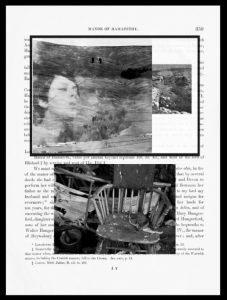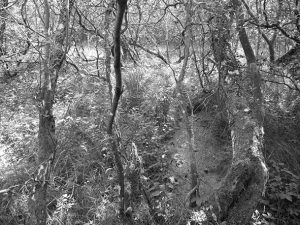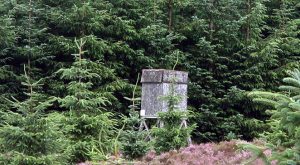A small pink geranium (listening to the dead)
As I’m sure I’ve said, all this writing was originally meant to be a way of listening to the dead, to the ancestors of my life, and was vaguely conceived as a missive to both yourself and Sarah as representatives of my own and the next generation. But then I remembered that there are things it’s far better not to tell the young. After that you, and the ancestors themselves, became my addressees. Not ancestors in a literal sense, of course. What I’ve been trying to do, if I’ve understood our discussions correctly, is to interweave many of the voices that have ‘made up’ (in both senses of that phrase), ‘my’ narrative identity in a multiverse.

It’s almost a year since I wrote the little snippet below in my diary. Hard to believe now that I still hoped then that I might pass through all this illness and return to old habits, whereas now my entire previous life appears to have happened to someone else entirely.
“Mrs. Oliver very frail now, but her mind’s still good. The doctor told her yesterday she may have a few more winters in her yet. We sat quiet this evening, three generations together. I didn’t ask Sarah to sing. I’m still glad I taught her the ballads, even if she learned them largely to please me. Maybe she’ll value them in time. There’s two I’ve not taught her: ‘Lucy Wan’, (I’m still uneasy about Patsy and Michael), and ‘Bonny James Campbell’, (because of her mum and Peter). Time yet, maybe.”
Those thoughts seem rather maudlin and somewhat naïve now. But it’s hard to let go of my investment in the old songs because, in one sense, they’re more real than we are, sing us rather than the other way around. In that other world, only a year ago, Mrs. Oliver was still with us and Sarah going back to the farm for the odd weekend, not staying with herArvid in preference to coming to sing with me!

A pair of lapwings.
I think all this is coming to an end now.
We are, of course, all far more porous than we allow. I have written about different people I knew but each, in her or his way, is also a partial ancestor of the compound, loosely woven personage who writes this page. We’re all just shifting currents in the same sea, Po-souls who’ll sink back into the same earth.
The public Lizzy still goes confidently about the region, and all the other ones I’ve known or glimpsed over the years appear to have gone to ground, down into the dark. Those bright echoes of her mother’s youth and of the strangeness of Elizabeth Reed who, limping through life, did so much to set Lizzy on the path that led to Peter when she was still only a girl, somehow gone. (Or so it seems to me.) I hear Peter’s voice still. Not the poor drowned Peter who, if he’d lived, would now be indistinguishable from any number of other ruddy, thick-set and aging farmers, gathered in some corner of a cattle mart, each dressed in neat but faded tweeds, to debate the price of yearlings. Quite another Peter, both quick and dead who, as boy and young man, kept coming back for Lizzy, although whether to save her or himself I can’t know. Yes, I still occasionally hear him, like an undertone of uncertainty in the early morning song of a blackbird. I suppose there may be a corporeal James out there somewhere, his body now running to fat, maybe pontificating over the Financial Times at the nineteenth hole of some exclusive Home Counties golf course and so, finally, the perfect embodiment of his father, son and heir. But I keep another James alive so that, when the deals have been done and he’s back in the blank space of some airport executive lounge, for a moment he’s still the youth who sat silent with Lizzy and me one evening, watching stars fall and die. The boy who helped two young girls on the cusp of change connect with a clutch of strange old songs, gifted them in a discarded box, with a whole wide, vital and varied world of music-making. I will no longer distinguish the slurred, alcohol-roughened growl of the deeply troubled Mike we buried at Wooler from the young schoolyard hero who championed, and was loved by, his plump, confident little sister. I’ve let them both go to be themselves now, finally setting aside the purulent speculation I’d attached to Mike’s telling me that Patsy’s leopard freckles covered every inch of her body. As for Patsy, I can hear only the smiling girl child who, for a few brief years, sparkled within the protective aura of her brother’s reputation. I cannot, or cannot bring myself, to hear the burdened, haunted girl whose wellbeing caused Cat and Mike to take opposite sides in some struggle that will always remain unknown to me. Cat whose singing voice, like both her shallow breath sweetly brushing my neck as I fell asleep and her tragic death, I keep close to me now. All the shades who are both themselves and the lively ancestors of my present self, who whisper to me, along with my mother and father and the innumerable and glorious birds and beasts most clearly experienced in my childhood; the whole wide world of my kith and kin (and not only in dreams and memories.)
And, of course, there’s all the others too. The Kate with the wicked pirate’s laugh, bad fairy and mistress of dangerous secrets, whose other, adult voices are lost to me, drowned out by life in an antipodean world about which I know nothing. The mercurial Kate I loved, envied, and somewhat feared because she spurred me to override my fears and innate caution, somehow imbued me with the calculation necessary to challenge my own desperation, even if that led to my childish attempt to seduce Hamish. (I know now that childish self would have gone through with it if he’d wanted to, that sexually inquisitive girl/woman that Kate had birthed from her cocoon.) That momentarily brave girl/woman who knew in her heart that anything was better than to drift into being the distant, untouchable, disembodied, angelic, (and so sexless) muse of a secret poet and latent priest. Dear Hamish, so wounded and confused by his father’s frigid, angry dualisms, whose musings and troubled and tender silences, as much as his tentative explorations of my flesh, woke me to my own unruly desires. Bodily desires, yes, but also a sowing of other possibilities; of entry into a world of fully sensuous, deeply tactile, imaginings made flesh – the strange fruit, perhaps, of Tam Lin’self-queen’s ‘eyes of wood’. Kate and Hamish, earthy seductress and erstwhile saint, the twin yet incompatible anchors in the tug-of-war that forced me to reinvent myself through acts of imaginative making. And then Mario, unbidden friend and casual initiator of my European citizenship, the secret lover of no doubt beautiful boys I never knew; Mario star in a distant city who then fell and died alone.
Also, first among the living, my dear Sarah, the whole bright arc of her from helpless bairn, through flowering child, to the bright, brave young woman who, with warmth and care, is negotiating her way through the traps, rewards and tangles of a life of research and action. And my briefly beloved Andreas, golden one, the brightly burning gift of a kindly Fate, a wholly unexpected feast and refuge in my last real London days. Old now, with deep smile-lines around his eyes no doubt. But then, a softly furred, honey-coloured, spice-scented being, a mouth warm, wet and tasting of Nykteri; my post-coital purveyor of breakfasts of fresh figs, galaktoboureko, and sweet black coffee in the sanctuary of his tiny Highgate basement flat. Of late dinners: tirokafteri, tzatziki, or dakos, followed by kolokythoanthoi, spanakopita lamb, soutzoukia smyrneika, spanakorizo, or maybe tiropita; then grapes and melomakarona or maybe baklava to finish. Meals lovingly prepared and followed by the long slow walk up the twilight hill and back, before falling into the pleasures of the still unmade bed.
The Andreas who would leave me, exactly thirty-three days after we became lovers and just as he had told me he must. Left for the waiting penthouse in Houston and the marriage to Ariadna,to which his father had committed him at fourteen as the seal on the partnership of two families. Andreas who I allowed to become my first and only dealer and who, in less than ten years, turned Papadopoulos and Ioannou into the most respected gallery for makers and up-market crafts in Texas, perhaps the entire American South. The Andreas who is a loving husband and the doting paterfamilias of four girls and a boy; whose Christmas letters always overflow with their news and achievements, always radiate a simple pride, and never mention the vicissitudes of the business. And that other Andreas, the punctilious businessman who unfailingly pays me my annual artist’s retainer as agreed all those years ago, punctiliously calculating the proper percentage to be passed on to me for each sale. A man who has served my work so well I’ve never needed another dealer.
Iain, you may wonder why have I never bothered you with my maker’s life.
Initially, I think, because I had no wish to risk being labelled a ‘craftswoman’. Later, simply because it would have involved giving you a wholly predictable account of my craft – the making of two or three small wooden pieces a year in whatever spare time I had left over from my mending work; my small, highly intricate wall pieces like puzzles made for the delight of fitting together different woods chosen for their distinctive colour and grain. What could be less interesting that that production, or the business of shipping the outcome off for sale. Pleasurable and necessary respectively, of course, but still a set of entirely self-contained practices that had little to contribute to exchanges outside the small world of my art. My dear, I simply had better and more interesting things I wanted to explore with you.
And, of course, I have listened to you, all your various voices in our various exchanges. (We’ve written often enough of them and I’ll not bore you by going over that ground again.) So, here I am, waiting for the inevitable and, meanwhile, listening to these and all the other night-selves, ancestors, shades and kith who are good enough to visit or even stay with me.
I should have liked to be a braver soul, somebody about whom you could have said when she died, as the poet Robert Bly did of James Hillman, that: ‘Flora threw enormous parties for the spirits’. I know only too well that I’ve had neither the courage nor the necessary generosity, although I have on occasion made real efforts in that direction and tried at least to lend the spirits a sympathetic ear. For that, and for the many pleasures of our friendship, I hope you’ll remember me kindly, will continue to speak with me in your head and heart when my body’s gone.
Enough. There’s a small pink geranium in a pot on the shelf below my window here, second cousin maybe to the wild one you found surviving on the sea wall. I’m not supposed to have it but my kindly Nigerian nurse, Wanda-May, pretends not to notice it. She even surreptitiously waters it for me, since I can’t do that myself now. It has that squat, slightly hairy look that I find endearing about geraniums. Sometimes if the sun is out and a nurse comes in to close my curtains so I can sleep, he or she brushes against it. Then its distinctive smell drafts across to me here in bed. I can’t say I particularly like the smell, but I do like that sharing, a reminder that the geranium and I, like all living things, have a common need for light, air and water, and that something, in consequence, is always being exchanged between us all. I find that extraordinarily comforting just now!

Improvised drinking trough, Side Head.
I’m tired and can hear the nurses starting their evening rounds. Again, enough, enough.
With love, as always
Flora

Fly-tipped bath in Bristol suburban woodland.
Postscript
In analysis you work to turn the ghosts that haunt you into ancestors who accompany you.
Bruce Springsteen[1]
I see little purpose in writing anything more about Flora, other than including here a quotation from a book she recommended to me right at the end of her life, Octavio Paz’s Sor Juana. Flora was neither a poet nor a nun, but this passage seems to me to summarize something essential about her. Paz writes of Sor Juana that she was not ‘a simple person cut from whole cloth’, rather she was ‘a complex and dynamic being, in conflict with her world and herself.’ He adds:
The obstinacy with which she insisted on being herself, […] her fidelity to her inner voices, the secret and proud pertinacity that allowed her to bend without breaking, […] was (and is) an example of intelligence and will in the service of internal freedom.[2]
What follows here does not, then, directly concern Flora herself. It’s a very partial explanation of, and perhaps a summary of, the trajectory of a period of my work that began back in 1999, before the Debatable Landsproject, of which this is intended to be the final part. Work in which she played a vital part. In offering this account I am also coming clean about Flora’s claim to provide ‘heart work’ as a counter-point my ‘head work’. Less a post mortem as ‘conclusion’, then, than a setting out of certain concerns.
Those readers who do not feel the need for any such prosaic explanations may wish to stop reading at this point.

The main purpose of what became the Debatable Landsproject was to carry out a series of linked forays into unknown territory, forays that acknowledged, engaged with, and tried to interweave, the plural interests and energies of the porous, conflicted constellated self I found myself to be and its places in the world.
Those constituent concerns included those of a university lecturer trained as a visual artist who, while necessarily engaged in the professional activities of those two ‘worlds’, was also personally entangled in thinking that was marginal to the orthodoxies of both. Those entanglements included a long-standing preoccupation with the post-Jungian or Archetypal psychology associated with James Hillman; a powerful identification with the rural uplands of the North of England, the Scottish Borders and the Highlands and Islands; and a passionate curiosity about the power of certain forms of traditional and contemporary popular music. These concerns gradually generated resistant to what, following Crawford Brough Macpherson, might be termed‘the culture of possessive individualism’, a culture that artists and academics were increasingly expected to internalize if they wished to thrive. That resistance may have been partly due to temperament but, more centrally, it was a response to unusual and demanding family circumstances. The resulting dissonances generated the tensions that have framed the Debatable Landsproject.
By 2012 that project was losing direction because my energies had been diverted into generating a discourse around ‘deep mapping’ (hence Flora’s comment). Early versions of the present text appeared, in consequence, to belong to some quite other order of concern, and were written out of a period of considerable professional, family, and personal change. That period began with a diagnosis, in early 2013, of advanced bowel cancer. A major operation saved my life but had ongoing consequences; health issues arising from chemotherapy and the end of regular academic employment. As a family, we also needed to undertake the drawn-out process of finding, buying, and adapting a smaller house to our needs. All this impacted on, and gradually modified, my sense of place and the ‘deep mapping’ I’d been involved in since 1999. Only very slowly did I come to intuit that the amorphous text on which I was working, almost despite myself, might have some relationship to the Debatable Landsproject and, despite its apparently very different nature, provide its resolution.
This work is, then, a going through, a giving form to, a modification of (?), my senses of place as reconfiguring an ongoing project. One way to describe what I’ve attempted here would be to say that I have taken William Least-Heat Moon’s ‘PrairyErth (a deep map)’ as a starting-point but, rather than focus on an external, geographically defined, location, instead set out to map a composite internal set of place-based relationships. An indication as to why this work might provide an appropriate conclusion to the Debatable Landsproject, previously always closely aligned to the teaching I no longer regularly do, came on 23rdJanuary 2017. I received an email from a friend of a friend who, three years earlier, I’d helped in a small way with her doctoral work. This communication resolved the indecision and doubt that, for some months, had prevented me finishing this text.
My correspondent had read Between Carterhaugh and Tamshiel Rig: a borderline episode, the first work in the series this book concludes, and wasusing it for a workshop on ‘landscapes of the imagination’ she was helping run. What had inspired her to do so was the chapter ‘Everyday magic: singing walking writing’. This, she told me, had enabled her to identify: “what is missing from my academic training”. Coincidentally, she had also become fascinated by stories of wolves in a region she was researching for a piece of creative writing she never seemed able to finish. She goes on: ‘Perhaps the wolves have become a symbol of my own imagination and its repression through academic training’!
Wolves, and human attitudes to them, play a central role in Between Carterhaugh and Tamshiel Rig, which begins as follows:
“For much of my childhood I suffered a recurrent nightmare. It began as I took the route of a familiar daytime walk – a muddy, flint-studded path that leads away from the house into a wood. I follow it through the well-thinned hazels and out onto the edge of the farmland beyond. I am alone. Arriving at the fringes of more established woodland, thick with young saplings between vast, smooth-trucked beech trees, the path takes me along the edge of a rough strip of grass between the wood and a large, L-shaped field. In the distance, there is an orphanage where, on daytime walks, I sometimes hear children laughing and playing together. Now there is only silence”.
“Where the path turns a corner towards the lane I pass an old wooden shed that is gradually disappearing under nettles and briars. When I reach the point where the path crosses the narrow lane a vast black wolf confronts me. It stands at least as tall as myself. It always appears as if out of the air, materialising at the edge of the shadows just where the lane runs in under overhanging trees. I know instantly that my only hope is to lie down on the road with my eyes closed, hold my breath, keep absolutely still. I must play dead, as I have done in this dream hundreds of times before. On each occasion, I wait to see what will happen next. Usually, after what seems like an eternity of the wolf sniffing around me, I wake in absolute terror just as it starts to eat me alive.”
What I did not say then was that this same wolf sometimes behaved very differently. For example, it once spoke with me at length (I don’t remember what about), while a great city burned in the distance behind it. In short, its place in my childhood was more ambiguous than the passage above suggested.[1]In one sense, then, Between Carterhaugh and Tamshiel Rigwas an extended ‘staying with’ just one aspect of that dream wolf by following its sense of uncanny violence via the history and geography of the former parish of Southdean just north of the English Scottish border. That process of ‘staying with’ the wolf,a process borrowed from James Hillman[2], provided the basis for an imaginative, image-based connectivity across time and space between a wide variety of topics; childhood sites, etymologies, histories around Borders place-names, the ethnography of an old song still sung today, scape-goating, land rights, otherness, and terrorism, for example. But it did not begin to exhaust my listening to the figures that appeared through that work.
The sense of returning to something still potent in my concern with the reanimated image of the wolf, revived by that email on January 23rd, 2017, became linked to observations made by Octavio Paz. These concern the implicit ‘authorisations and prohibitions’ that, in any society, institution, or professional world, become the tacit basis for an automatic and unthinking obedience predicated on self-censorship. An obedience further guaranteed by all those figures whose institutional authority is ultimately dependent on perpetuating those authorizations and prohibitions. Paz suggests that a creative work may tell us something that can only be understood if we realize that, as an ‘utterance’, it is ‘surrounded by silence: the silence of the things that cannot be said’[3]precisely because its creator has internalized those prohibitions.
One of my primary concerns in Between Carterhaugh and Tamshiel Rig was to find a way to interweave scholarship and fieldwork with the types of testimonial imagination (in Richard Kearney’s sense) I felt were prohibited. Both by an academic training predicated on Modernist notions of rational, self-sustaining, and consequently reductive, disciplinarity, and by the hyper-criticality of the Postmodern. I wanted, in addition, to draw attention to a‘thing-that-could-not–be-acknowledged’, the wolf in imagination, while still working as a teacher/artist/researcher. This seemed to me to involve engaging with, and validating, the contemporary relevance of, traces of what I took to be a vital tradition of quasi-pagan vernacular animism alive and well within British culture; something articulated through our singing and listening to the ‘supernatural’ Borders ballads. Interwoven with all this there has been the issue of the repression of testimonial imagination by a culture obsessed with novelty.
The situation indicated above is not, of course, simply personal; rather it reflects a significant social phenomenon. The journalist Paul Mason, in a long article on the protest marches world-wide following the inauguration of President Trump, writes:
“So the challenge for the truly liberal section of the elite is – as in the 1930s – what to do. If you work for a bank, a law firm, an Ivy League university or a Silicon Valley giant, and your employer is systematically accommodating the new, post-factual reality, you are – even now, just weeks into the Trump era – living a double life.”[4]
While I largely agree with the substance of his article, I think the link between having to live a ‘double life’ and Trump’s arrival in the White House misrepresents a situation that has a much longer history.
It was clear before the turn of the twenty-first century that university employees were being required to live multiple and conflicted professional lives. As lecturers, we were expected to square educational values with the demands of an increasingly authoritarian management culture based on quite other values and imposed by diktat. The research activity that had animated our teaching and kept it current was no longer to be determined by our interests and expertise, but by instrumental institutional responses to a system of state audit predicated on economic control. To borrow from Hannah Arendt, our ability to actwas being reduced to a passive capacity for directed work. Not only that, but institutions were beginning to adopt quasi-totalitarian strategies; the endless reorganisation of departments and faculties, revisions and de-democratisation of committee structures, and so on, all of which increased the power of management.
I made ‘Between Carterhaugh and TamshielRig’ to articulate the convergence of a physical and psychic landscape. A convergence necessary to the multiple possibilities of creative work and able to sustain my engaging with, and teaching about, the constellation of memory, place and identity through testimonial imagination.It was then a response to an increasingly repressive and alienating educational context. The body of work around that book then mutated into the larger ‘Debatable Lands’project. By the time ‘Debatable Lands Vol 1’ was published in 2007, I was also heavily engaged in co-ordinating informal networks that created the space necessary for such imaginative work, collective or otherwise, to survive. The ‘Debatable Lands’project had, by then, taken on a more political inflection following the Border ballads, and the conflict of mentalities they helped illuminate, west across the water – first to the Ireland of the plantations and then to the USA. What I had understood, from reading Geraldine Finn, James Hillman, Felix Guattari and others, was that the psychic, the social, and the environmental must all be thought together, from a ‘place-between’ the contradictory life-worlds in which I was by then enmeshed. From the perspective of that place-between, Trump is simply a by-product of a crisis that has overwhelmed the academy, the dominant culture, and society at large. A crisis in no small part generated by the wholesale internalisation of possessive individualism. Trump is, after all, only a gross articulation of possessive individualism in its most extreme, monomaniacal, form.
By 2007 the Debatable Landsproject made it possible for me to articulate an ‘open’ deep mapping, one that attempted:
“[…]speaking from the space-betweenrepresentation and reality, language and life, category and experience: the space of the ethical encounter with others as the other and not more of the same – a space and an encounter that puts meinto question, which challenges and changes me, as well as the other (the otherness of the other) and the socius/the system that contains and sustains us.”[5]
The resulting preoccupation with academic discourse also began to cut me off from (Laura)/Flora/Faun as kith, as invisible friend. ‘She’ became the aspect of ‘placed-between’ I had increasingly neglected, its psychic dimensions personified, the constellation able to facilitate renewed conversations with multiple qualities and selves. Some sense of the ancestral roots of her persona can be evoked by listening to two thematically related songs: Alastair Roberts’ ‘I went hunting’from his Farewell Sorrow(2003) and The Handsome Family’s ‘Hunter Green’ from Last Days of Wonder (2006). Both reach back to the ancient folk supposition that there are men and women who are not constrained by their human form alone.[6]The supposition Hamish imaginatively realised in and through Laura.
Running through this work, then, is the tacit contention that we cannot properly engage with our current psycho-social-environmental situation until we learn to live with the cognitive dissonances attendant on acknowledging that we live, not by the reductive mentality implicit in the notion of a universe, but in the much greater complexity of a polyverse. In Roger Corless’ discussion of our many realities and selves, the voices of Helen Rhys-Jones, Cornelius Yang, Gregory Hinsdale and George-Michel de Saint-Hilaire allow him to conduct (in his own words), “an exercise in heteronomy, in allowing aspects of myself to emerge as semi-autonomous characters and act out a drama on the stage of my imagination”. He notes that these characters: “say what they wish” and that he exercises “no particular control over them”. While he identifies to a greater or less extent with them all, he does so most strongly with Professor George-Michel de Saint-Hilaire and “least of all with Helen”. He adds:
“Perhaps this is because I self-identify as an intellectual and am uncomfortable in the presence of persons who are strongly connected with their feelings. Never-the-less Helen exists, and she brings me back into my body when I get too professorial and lose my heart.”[7]
This returns me again to Flora and suggests that Hamish and Roger Corless may have had more in common than just a religious vocation. This postscript is, then, a brief exposition of Laura/Flora/Faun’s desire for a counterpoint to the scholarly plundering needed to create the other book works in the Debatable Lands series that, in turn, drew me into debates around deep mapping. This final piece is our‘heart work’, offered in the spiritof testimonial and empathetic imagination and as a small act of defiance in the face of their increasing repression.

At the edge of the old world (Orkney beach).
This book concludes with two images from the abandoned book on imaginary friends that Flora and I had just started to work on when she became terminally ill. I only have the photographs in which she arranged for Sarah Armitage to stand in for her younger self. She did not feel able to sit for a second series, which would have shown her wearing the same mask but as an adult.


[1]Quoted in John Lahr, ‘Greasers and Rah-Rah’, London Review of BooksVo. 39, No. 3 02.02. 2017 p. 29.
[2]Octavio Paz (1988) Sor Juana,Cambridge, Massachusetts, The Belknap Press of Harvard University Press pp. 296-297.
[1]My relationship with this dream wolf would eventually find a resolution in an extraordinarily vivid waking dream that occurred entirely unexpectedly during a session with a therapist. On a beach flanked by low, crumbling cliffs, I watched two wolves play in the space between me and the sea. This brief vision appeared to take place in a space just beyond the room in which we were sitting and had an air of tranquillity and peace.
[2]See James Hillman (1979) The Dream and the Underworld. New York: Harper & Row
[3]Octavio Paz (1988) Sor JuanaCambride, Mass., The Belknap Press of Harvard University Press p. 5.
[4]The Guardian(G2) 24.01.17
[5]Ibid. p. 176.
[6]An example of a male variant on the theme of transformation in the two songs referred to would be Mr Fox’s version of ‘The Gay Goshawk’ from Join Us in Our Game 2004. Record label.
[7]All quotations are taken from: Roger Corless: ‘Many Selves, Many Realities: The Implications of Hetronymy and the Plurality of Worlds Theory for Multiple Religious Belonging’, originally given on October 6th, 2002 andreproduced at: http://www.pcts.org/journal/corless2002a/many.selves.pdf








